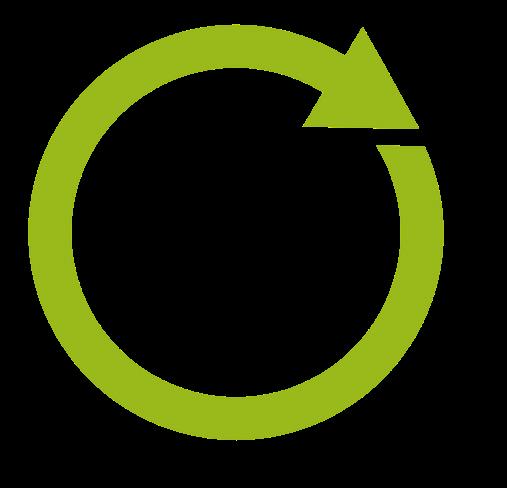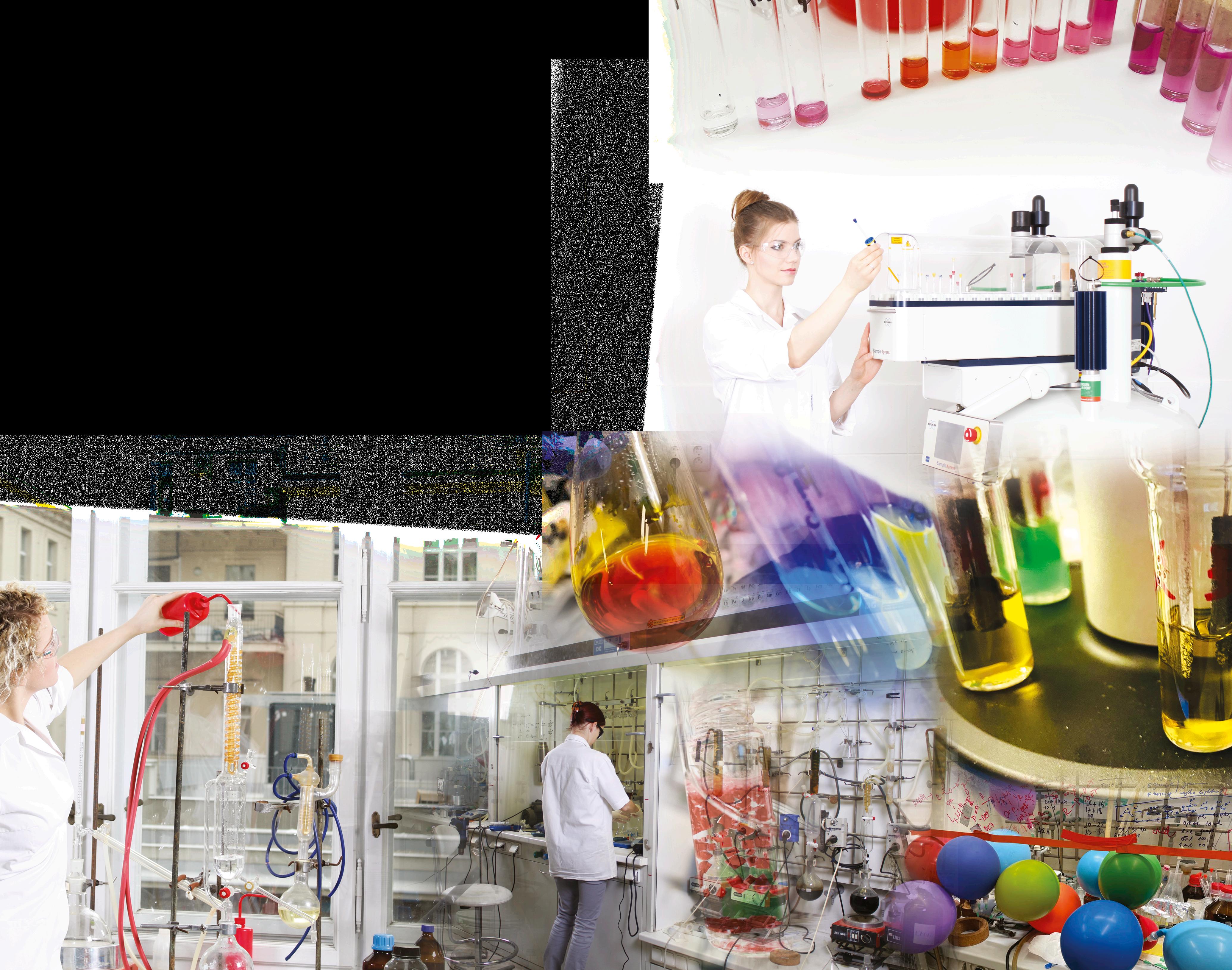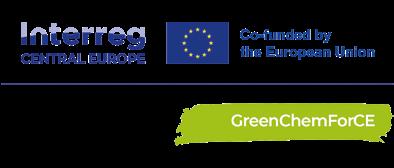
Circular chemicals for a cleaner future

Lukáš RýčekProject manager, Assist. Prof. at Charles University

Karin

Eliška MatoušováFinance manager, Assist. Prof. at Charles University

Ivan SoučekDirector of SCHP ČR


Florian

Theodor PetříkAssociation of Chemical Industry of the Czech Republic (SCHP ČR)

Jaroslav ŘíhaHead of API Development in Zentiva

Zoltán



Igor PlazlProfessor at University of Ljubljana

Current methods of producing chemicals lead to high levels of CO2 emissions and generate a lot of waste, now researchers in the GreenChemForCE project are looking to develop alternatives. This work is part of the goal of using materials more efficiently and putting the chemical industry on a more sustainable footing, as the project’s Principal Investigator Dr Lukáš Rýček explains.
The conventional process by which chemicals are produced is energy-intensive and leads to large quantities of waste. Plastics, on the other hand, pose another environmental challenge: they contribute significantly to pollution throughout their life cycle, particularly when they are discarded into the local environment after use. The established, linear patterns of chemical production, use and disposal have a significant impact on the environment, prompting researchers in the GreenChemForCE project to investigate new production methods. “We want to establish circularity in the production of chemicals, to re-use materials,” outlines Dr Lukáš Rýček, the project’s Principal Investigator. There are several strands of research within the project, which is organised in three main work packages, covering different topics around chemical production and the re-use of materials. The first work package is focused on the depolymerization of nylon-based plastics, and producing a nylon monomer from plastic waste, while Dr Rýček and his colleagues are also pursuing other avenues of research. “In the second work package we’re looking into utilising carbon dioxide (CO2) and the possibility of its capture and
incorporation into organic molecules, e.g. active pharmaceutical ingredients (APIs) or some other high-value chemicals,” he continues. In this line, researchers are also looking into the use of bio-renewable feedstock for chemical synthesis, to replace oil-based materials. “Materials like cellulose or lignin are naturally produced from CO2 Therefore, they are an attractive alternative
Nylon depolymerization
This work is part of the goal of moving towards a more circular approach in the chemical industry, where materials like nylon are reused rather than simply disposed of, which is the focus of attention in the first work package. Plastic itself is a polymer which consists of multiple units (monomers), and resources can be recovered from waste like fishing nets or old
“A bio-renewable solvent called Cyrene can be used as an alternative to DMF and NMP. We ask companies whether there are any processes where they use these solvents, and where this bio-renewable alternative can be applied.”
to oil-based chemicals,” explains Rýček, and he adds: “In the third work package we combine our expertise to look into various aspects of green production of chemicals, such as APIs or dyes. We search for ecological alternatives to replace critical solvents with bio-renewable solvents or water. We are trying to use rare transition metals effectively, or recover them for application as catalysts, and we look into the possibility of using enzymes or whole microbial organisms to do chemical reactions for us.”
carpets, then re-used in new materials. “Once a fishing net is torn, it loses its functionality. We aim to take this kind of waste and break it down to monomeric building blocks, which can then be used to reconstruct the same polymer from scratch,” explains Dr Rýček. The depolymerization method developed in the project has been shown to be effective so far and is now being tested on a larger scale, with a view to demonstrating its commercial viability. “Our project partners are optimising some parameters to intensify the process, to
actually get that building block monomer with a higher level of effectivity. We are also trying to interconnect the companies from different regions, so they can supply each other with the material. Either they would supply us with the raw waste material, or we would supply them with the ecological polymeric product,” says Dr Rýček.
Circular carbon dioxide
Researchers in the project are also investigating circular CO2 streams with a view to reducing emissions, which is a major concern in the chemical industry. There are three main directions in this. “There is the carbonisation of CO2 , where CO2 is captured, and converted into carbonate, a less environmentally problematic chemical, that can be used more widely. Alternatively, we can utilise specific bacteria to incorporate CO 2 into a structure of high-value chemicals that are products of their metabolism,” outlines Dr Rýček. “Another possibility is to use so-called bio-renewable chemical feedstock, such as biomass, and convert it into useful substances, such as APIs or their intermediates. Biomass is primarily produced in nature from atmospheric CO2 , in photosynthesis. Moreover, in this way, we can avoid the use of oil-based feedstock, so it is a win-win situation.”
Active pharmaceutical ingredients
This could help enhance the sustainability of API production, a major priority in the project. Researchers aim to identify some critical steps in the current methods of producing APIs which lead to waste, or that have other undesirable effects. “Many of the solvents currently used in the chemical industry are not really ‘green’ for example. They might be environmentally harmful,” says Dr Rýček. In collaboration with chemical companies, Dr Rýček and his colleagues are working to identify critical steps in the production of these APIs, and explore possible alternatives. “For example we are trying to perform these processes in aqueous media to avoid the use of some critical solvents. We are looking to use alternative, more environmentally-friendly solvents, or eliminate the use of solvents by technologies, such as ballmilling,” he continues. “A bio-renewable solvent called Cyrene ® can be used as an alternative to DMF and NMP. We ask companies whether there are any processes where they use these solvents, and where this bio-renewable option can be applied.”
An alternative, renewable solvent must achieve the same or better results as a traditional solvent if it is to be used in industry, so the project team are testing different aspects of their effectivity. “We want to see
if we can achieve the same results regarding the quality of the process, the purity of the compounds, and the yields,” says Dr Rýček. The economics of production is another important consideration, and while renewable solvents may be more expensive than the traditional ones, Dr Rýček says this may be counteracted by improved productivity further down the line. “If we can produce the APIs in higher yields and with higher effectivity using bio-renewable solvents, maybe companies will be willing to pay a little bit more for them,” he points out. “We have the scope to investigate these issues as well in the project.”
Reusable catalysis and biocatalysis
The project’s overall agenda also includes research into reusable catalysis, with the aim of reducing dependence on supplies of the rare transition metals like palladium, ruthenium and rhodium that are commonly used to catalyse chemical transformations. These metals are not very abundant and are also difficult to source, so the project team are working to enable their re-use. “Instead of the linear patterns of mining, manufacturing, using and disposing of these metals, we aim to close the loop and establish circularity,” says Dr Rýček. Alternatively, part of the team focuses on the utilisation of biocatalysis, where enzymes or whole cells are used to replace the chemical catalysts. This approach holds a lot of promise in terms of reducing the environmental impact of the industry, as it is usually carried out in aqueous media, with a low energy input, eliminating the need for the use of rare, or sometimes harmful chemicals. This research is at a relatively early stage, with the project team still working on pilot actions and assessing the effectiveness of different methodologies. The next step will be to implement those methods that showed the greatest potential, with Dr Rýček keen to ensure the project’s work has a wider impact. “Our industrial partners in the project will be implementing some of the methodologies that have been developed,” he outlines. While the project itself is set to conclude next year, Dr Rýček hopes the relationships that have been forged between the partners will lead to further research and help the chemical industry move towards a more sustainable future. “We hope that this project will provide a strong basis for further collaboration, beyond GreenChemForCE,” he stresses. “We believe that this work holds wider importance, and we have established a network with broad expertise. We hold regular meetings and will discuss the possibilities for further research and look at what funding opportunities are available.”
Bringing Green Chemical Production
Forward in Central Europe
Project Objectives
The GreenChemForCE consortium is dedicated to promoting circularity in chemical production. Our work focuses on three key areas: the depolymerization of plastic waste, the capture and utilization of CO2, and the development of circular processes for producing high-value chemicals such as active pharmaceutical ingredients (APIs) and dyes.
Project Funding
1,77m € Project Budget
80% of the budget is funded by ERDF
Project Partners
• Charles University (Lead partner)
• Association of Chemical Industry of the Czech Republic
• Zentiva k.s.
• The Servier Research Institute of Medicinal Chemistry
• Eötvös Loránd University
• TU Wien
• University of Ljubljana
• Chamber of Commerce and Industry of Štajerska
• VTL GmbH
Contact Details
Project Coordinator, Dr Lukáš Rýček
Charles University Department of Organic Chemistry, Faculty of Science
Hlavova 2030/8
128 00 Praha 2 Czechia (CZ)
T: +420 221 951 981
E: rycekl@natur.cuni.cz W: https://www.interreg-central.eu/ projects/greenchemforce/

Dr Lukáš Rýček earned his PhD in 2015 from Vienna University of Technology. After postdocs in Canada and Prague, and industry experience at Zentiva, he joined Charles University, where he established his research group in 2020. His work focuses on natural product synthesis, catalyst development, and sustainable chemistry.

